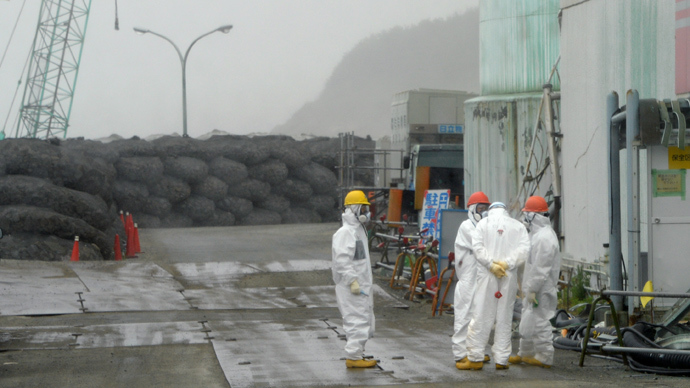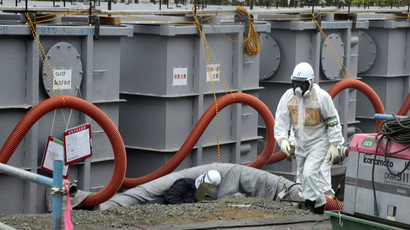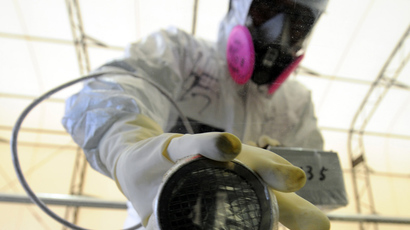Fukushima drainage has 20,000 tons of water with radioactive substance – TEPCO

Tokyo Electric Power Co. (Tepco) said on Tuesday that the drainage system of the crippled Fukushima nuclear power plant contains more than 20,000 tons of water with high levels of radioactive substances.
Tepco said that it detected 2.35 billion becquerels of cesium per
liter in water located in underground passages at Fukushima which
is leaking into the groundwater through cracks in the drainage
tunnels - a radiation level roughly the same as that measured in
April 2011. The normal level is 150 becquerels of cesium per
liter.
Japan’s nuclear watchdog said on Monday that the highly
radioactive water building up inside the plant vaults is creating
an “emergency.”
Tepco, which is responsible for decommissioning the wrecked
plant, estimated that contaminated groundwater could reach the
surface within three weeks. The company is currently failing to
prevent the drainage from seeping into the seawater near the
plant.
As a result, Tepco has decided that it is necessary to strengthen
barriers as well as increase the speed with which water is pumped
from the drainage area of the facility.
For the past two years, Tepco has claimed that it managed to
siphon off the excess water into specially built storage tanks.
However, the company admitted late last month that toxic water
was not contained.
As of March 2013, the station has accumulated more than 360,000 tons of water containing different degrees of radioactive concentration.
The Tepco plant suffered a meltdown in March 2011 after a 9.0 magnitude earthquake triggered a tsunami which caused the nuclear disaster. Almost 90,000 people within a 20km radius of the plant were forced to evacuate their homes due to the possibility of radiation poisoning.
Decisions to shut down all of the country's reactors were made
following the disaster. The final reactor was made idle in May
2012. However, since then two reactors were restarted, though
both of them will need to be put out of action for routine checks
before September.
Japanese experts predicted that as many as four are likely to
come back into service by March 2015. The country may restart
further reactors in July, Reuters cited a government-affiliated
institute as saying on Tuesday.














